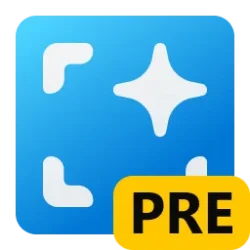This tutorial will show you how to enable or disable having the Open with dialog open when new apps get installed in Windows 11.
A default app is the program that Windows has assigned to open a file type with by default when you open it.
When you install a new app (ex: "ClipChamp"), the Open with dialog will open the next time you open a file type (ex: ".png") the new app (ex: "ClipChamp") supports to allow you to either keep using the current default app (ex: "Photos") or select the new or other app as the default app instead.
You must be signed in as an administrator to enable or disable the Open with dialog open when new apps get installed.
Contents
- Option One: Enable or Disable Open with when New App Installed in Local Group Policy Editor
- Option Two: Enable or Disable Open with when New App Installed using REG file
EXAMPLE: "Open with" dialog when open file type new app supports
The Local Group Policy Editor is only available in the Windows 11 Pro, Enterprise, and Education editions.
All editions can use Option Two.
1 Open the Local Group Policy Editor (gpedit.msc).
2 Navigate to the policy location below in the left pane of the Local Group Policy Editor. (see screenshot below)
Computer Configuration>Administrative Templates>Windows Components>File Explorer
3 In the right pane of File Explorer in the Local Group Policy Editor, double click/tap on the Do not show the 'new application installed' notification policy to edit it. (see screenshot above)
4 Do step 5 (enable) or step 6 (disable) below for what you would like to do.
5 Enable Open with when New App Installed
This is the default setting.
A) Select (dot) Not Configured. (see screenshot below)
B) Click/tap on OK, and go to step 7 below.
6 Disable Open with when New App Installed
A) Select (dot) Enabled. (see screenshot below)
B) Click/tap on OK, and go to step 7 below.
7 You can now close the Local Group Policy Editor if you like.
1 Do step 2 (enable) or step 3 (disable) below for what you would like to do.
2 Enable Open with when New App Installed
This is the default setting.
A) Click/tap on the Download button below to download the file below, and go to step 4 below.
Enable_Open_with_to_select_default_app_for_file_type_when_new_app_installed.reg
Download
(Contents of REG file for reference)
Code:
Windows Registry Editor Version 5.00
[HKEY_LOCAL_MACHINE\SOFTWARE\Policies\Microsoft\Windows\Explorer]
"NoNewAppAlert"=-3 Disable Open with when New App Installed
A) Click/tap on the Download button below to download the file below, and go to step 4 below.
Disable_Open_with_to_select_default_app_for_file_type_when_new_app_installed.reg
Download
(Contents of REG file for reference)
Code:
Windows Registry Editor Version 5.00
[HKEY_LOCAL_MACHINE\SOFTWARE\Policies\Microsoft\Windows\Explorer]
"NoNewAppAlert"=dword:000000014 Save the .reg file to your desktop.
5 Double click/tap on the downloaded .reg file to merge it.
6 When prompted, click/tap on Run, Yes (UAC), Yes, and OK to approve the merge.
7 Either restart the explorer process, sign out and sign in, or restart the computer to apply.
8 You can now delete the downloaded .reg file if you like.
That's it,
Shawn Brink
Attachments
Last edited:












